Monday Must Reads: Volume 30
This blog post contains Amazon affiliate links. As an Amazon Associate, I earn a small commission from qualifying purchases.
Happy Monday! I hope you had a great weekend. My weekend wasn’t super exciting, but I was able to knock quite a few things off my to-do list. I submitted a proposal for the Oklahoma Council of Teachers of Mathematics Summer Conference. I haven’t presented at a conference in several years, so I’m excited about the opportunity! I’m also excited to share this week’s volume of Monday Must Reads. This is a regular series where I share great ideas I have ran across recently on twitter and in the blogs I subscribe to.
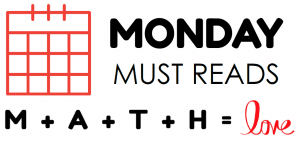
Rich Tasks on Sequences
Mr. Knowles has been doing some awesome work with creating rich tasks that address sequences.
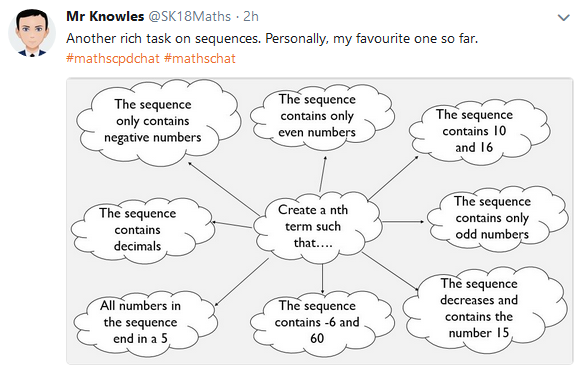
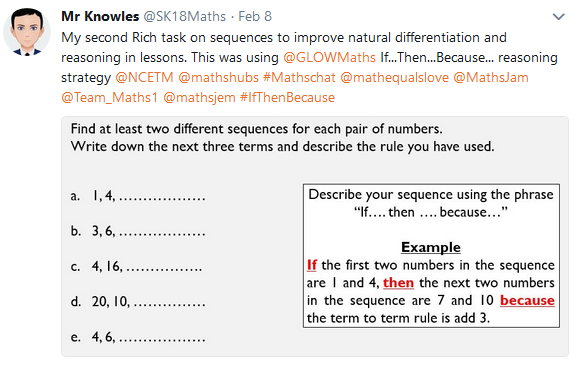
Venn Diagram Spider Activity
I’ve used several of Andy Lutwyche‘s awesome spider-style activities in my classroom over the past few years. I was excited to see that he has shared a new spider activity for venn diagrams! You can download Andy’s files on TES.
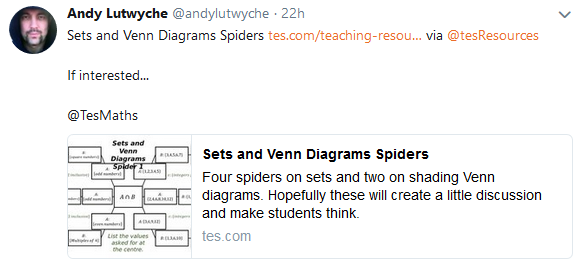
Test Reflections
Jennifer Williams shares an intriguing idea for how to get students reflecting on their learning after receiving their graded tests back. I gave up chapter/unit tests for only individual SBG skill quizzes several years ago, but this post has me thinking about possibilities for next year!
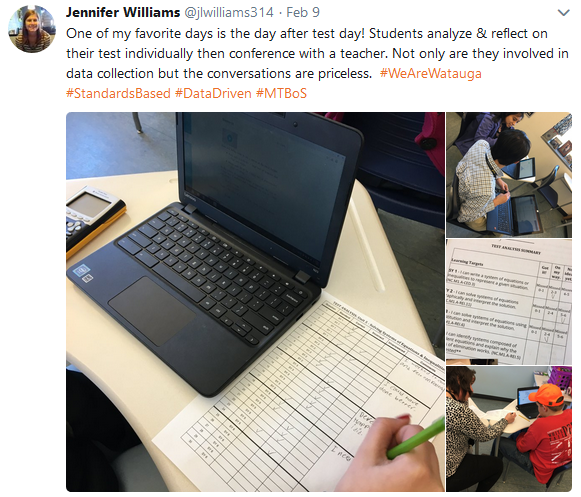
100 Math Problems for the 100th Day of School
Preparing to celebrate the 100th Day of School? Jennifer shares a creative idea for celebrating that involves having students create 100 problems for their classmates to solve.
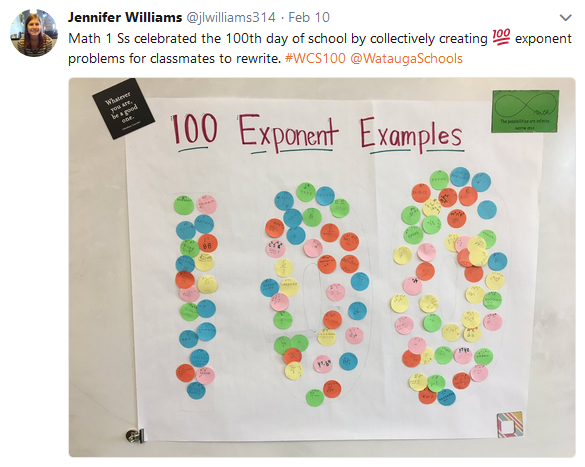
Mathematicians Around the World Bulletin Board
I love this display from TIBHS that features famous mathematicians from around the world.

Circular Christmas Ornament Project
Here’s another display that caught my eye on Twitter from Park Junior School. I would like to extend this project to give students a task to draw Christmas ornaments based on the circumference, area, radius, or diameter.
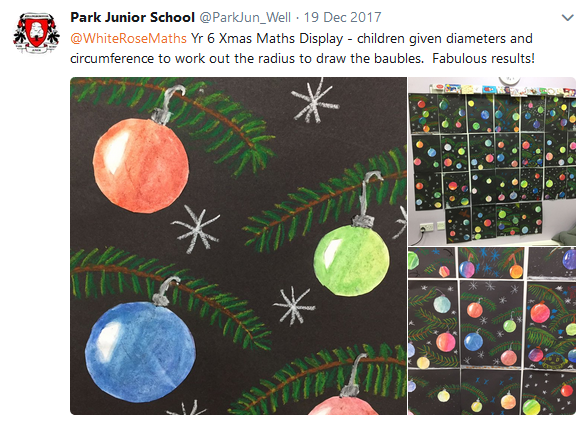
Geometry Valentine’s
Ms. Johnston shares some awesome geometric valentines her students created last year.
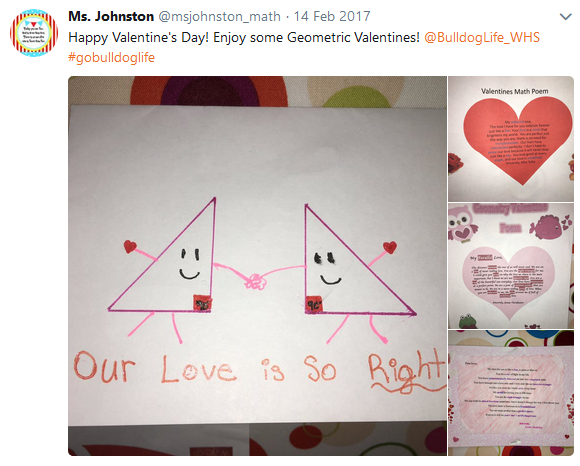
Cereal Box Prize Simulation
Another great idea from Ms. Johnston: Have students use dice to model how many boxes of cereal one would have to buy to collect all 6 prizes.
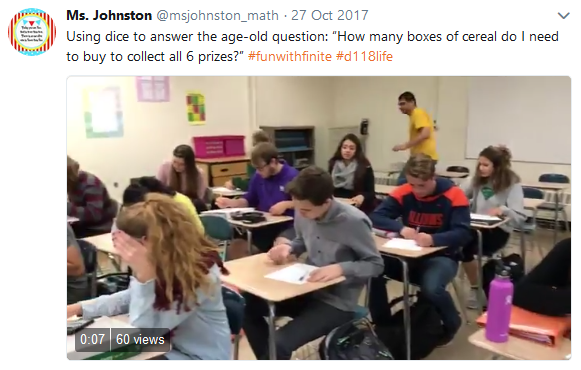
e Day Photo Opportunity
Coach Lombo shares a fun way to celebrate e Day.
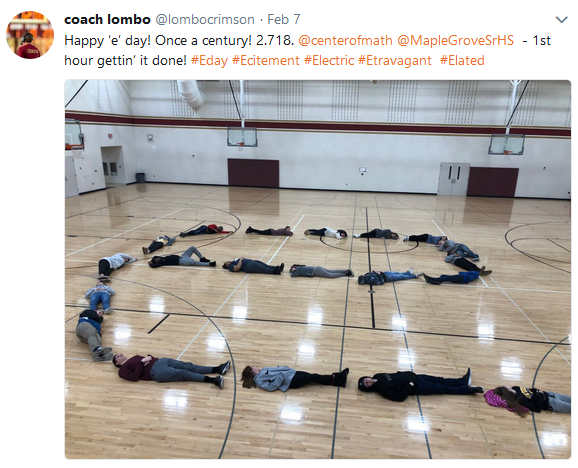
Celebrating e Day with Food
Amy McNabb took a different but equally appropriate approach to celebrating e Day with foods that begin with e.
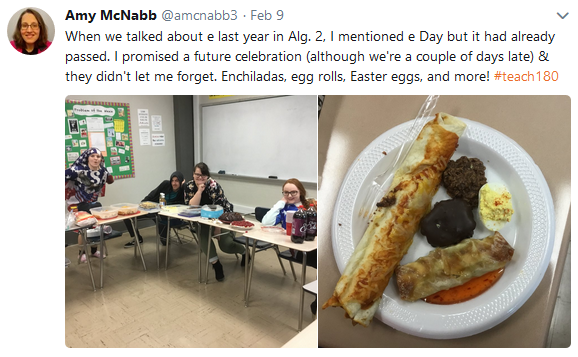
Pi Day Sudoku Puzzle
Now that e Day is over, it’s time to start prepping for Pi Day. Here’s a Pi Day Sudoku Puzzle shared by Cliff Pickover.

Pi Day Circle Drawing Contest
Denis Sheeran shares another idea for celebrating Pi Day that involves a circle drawing contest. Check out all the details here.

NBA Data Displays
Looking for some interesting data to use with your students? I highly recommend checking out the NBA Math Twitter Account.
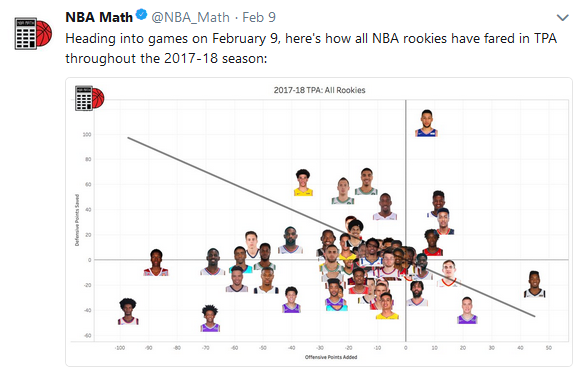
Painters Tape Angle Activity
Tveen Jatabachian shares a great idea for using painters tape on desks to practice measuring angles. I love the idea of having students rotate through stations around the classroom.
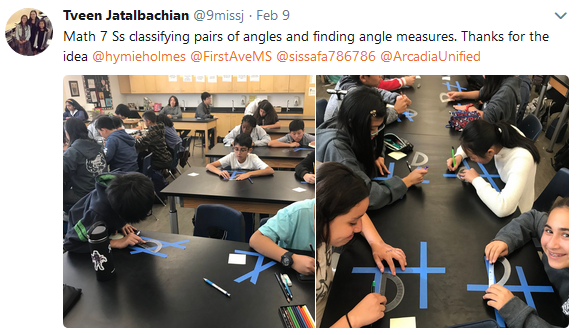
Classroom Graffiti Wall
Looking to promote student creativity and decorate the walls of your classroom a bit more? Gateways Classics suggests creating a “Graffiti Wall.”
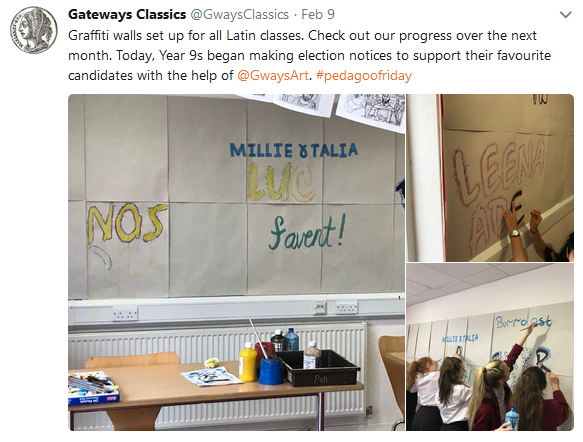
Mapping Group Decisions
Looking to improve group conversations and discussions in your classroom? Check out this idea of mapping conversations from Nicole Bolduc.
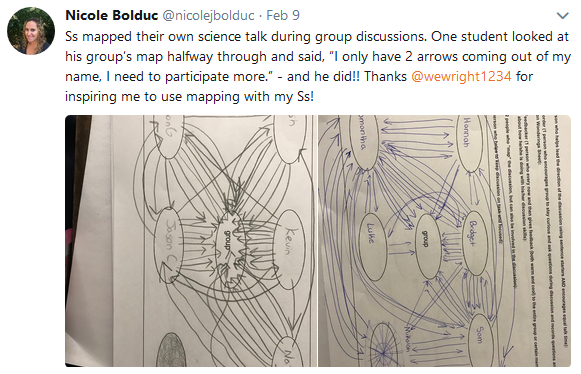
Coffee Probability
I love this example of real-world experimental probability from Anne Wagenaar.
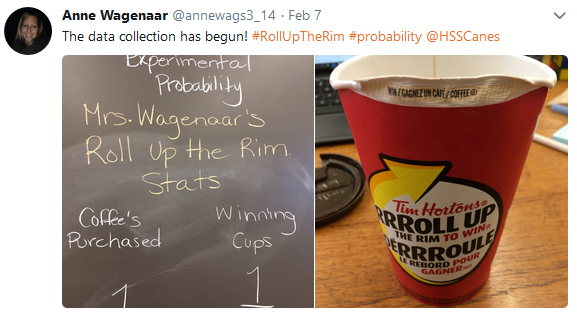
Factoring Open Middle in Desmos
Paul Jorgens combines several awesome things into one: factoring polynomials, open middle problem structure, and Desmos.
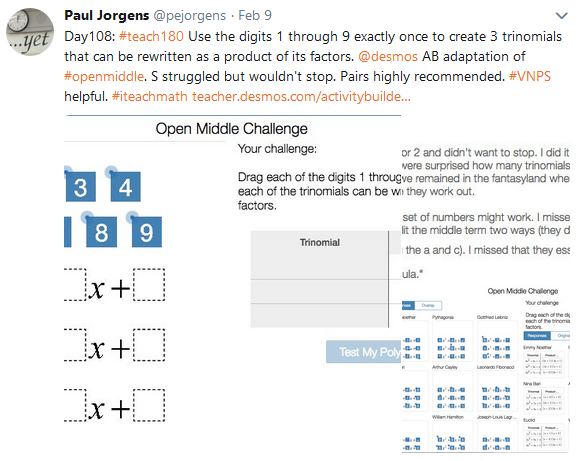
Missing Coefficient Factoring Puzzle
Paul shares another factoring puzzle with a missing coefficient.
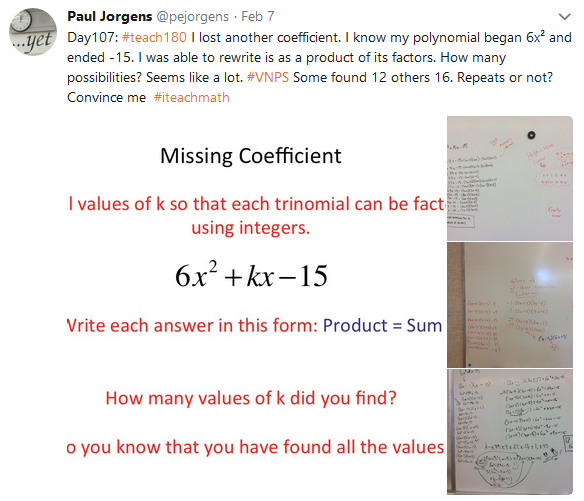
Olympic Sock Speed Skating
I love how the Olympics brings out creativity in so many different classrooms. I especially love the idea of Olympic Sock Speed Skating from Lisa Rode!
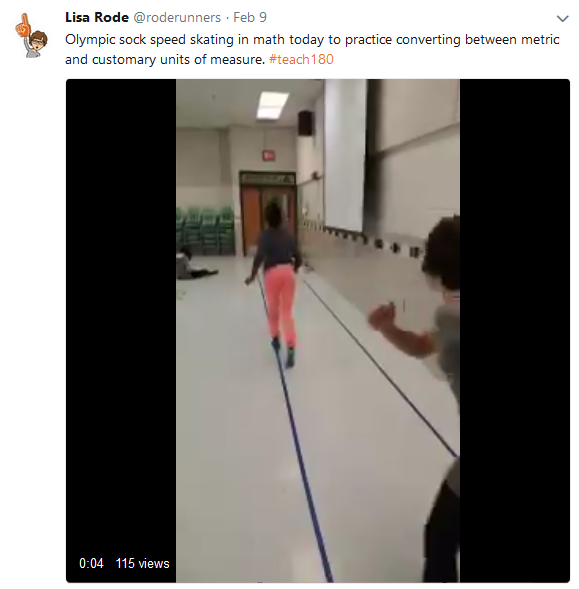
Barbie Math Olympics
Mrs. Jane Pontes has also got in the Olympic spirit by having her 7th graders host a Barbie Math Olympics.
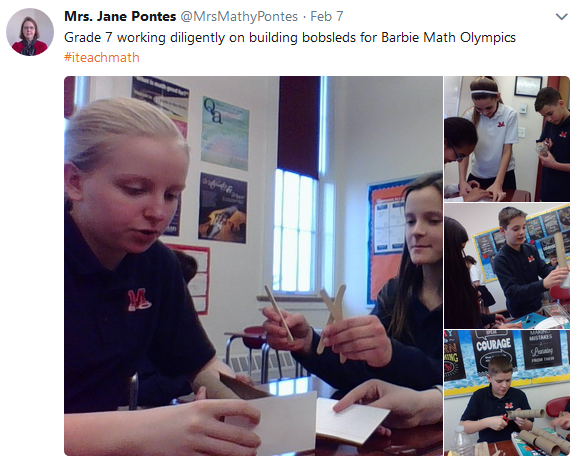
What do these equations have in common?
L Hamiter poses an interesting question. What do these three equations have in common?

Area Puzzle
If geometry is more your thing, check out this awesome area puzzle from L Hamiter!
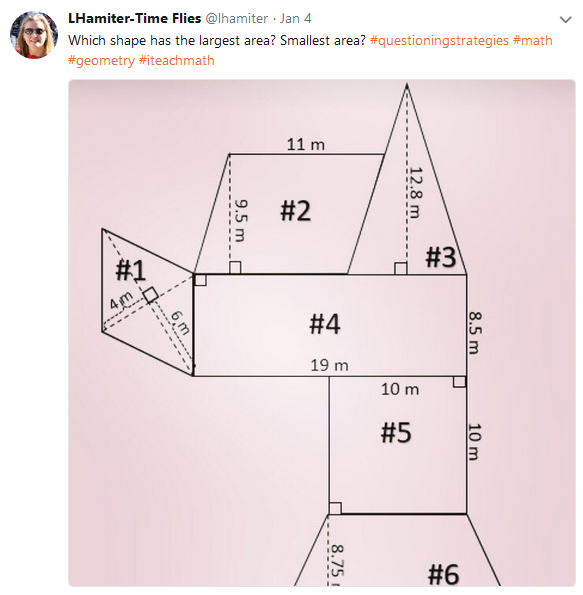
Grand Jury Statistics Task
Susan Pienta is making me want to go back and redo my entire unit on scatter plots just so I can include this activity.
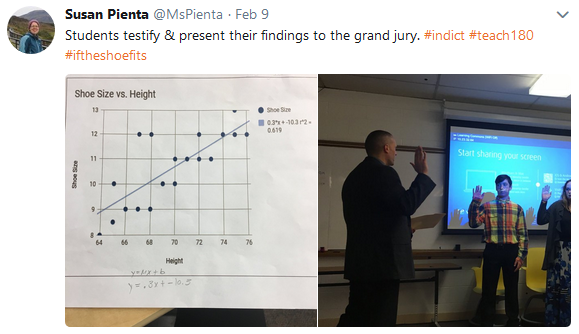
Color Coded Angle Artwork
Amanda Schweissguth shares some awesome student work. I love that students had to color-code their artwork by angle type.
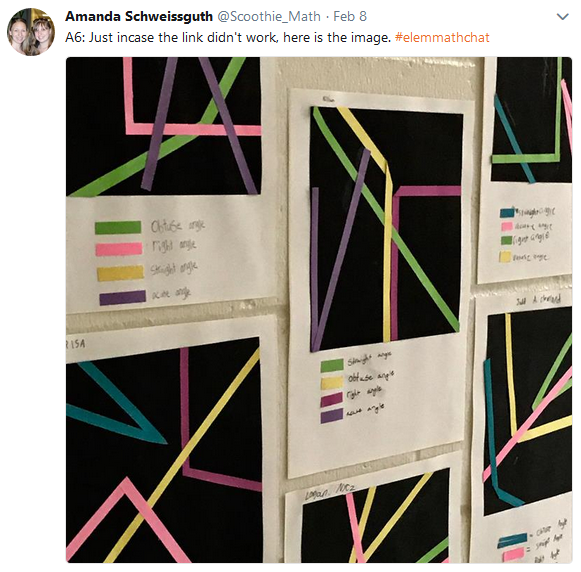
Naming Ionic Compounds Dry Erase Mat
It’s no secret that I love dry erase templates. So, I was super excited when I saw Lin W created a dry erase template for naming ionic compounds in chemistry.
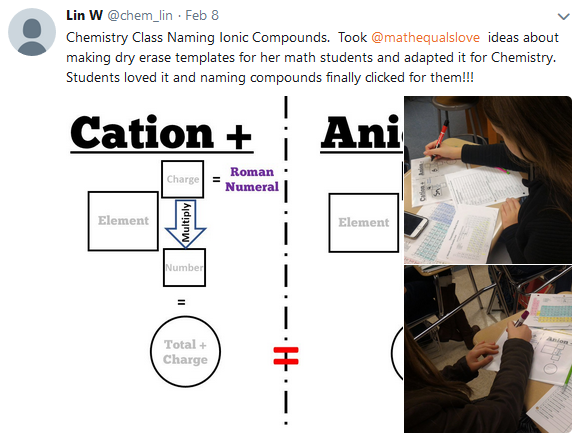
Real World Rate of Change Data
Want to use up some of your students’ energy and collect some real-world data for rate of change at the same time? Check out this idea from Sarah Clooney.
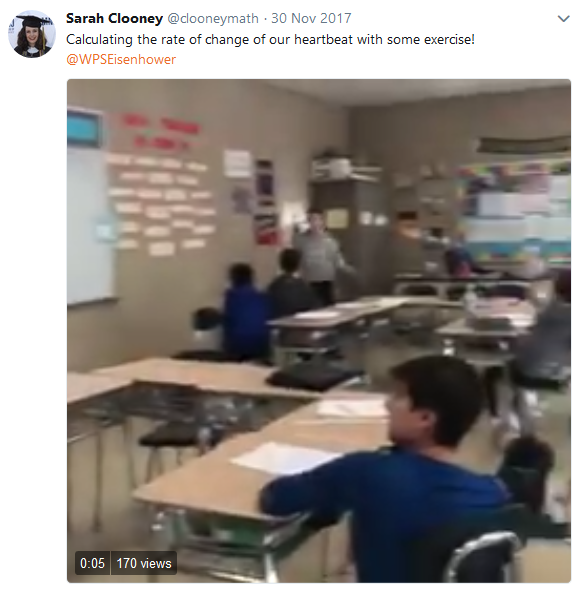
Coin Riddles for Systems of Equations
Also from Sarah Clooney: An awesome activity for systems of equations involving riddles and cups of coins.
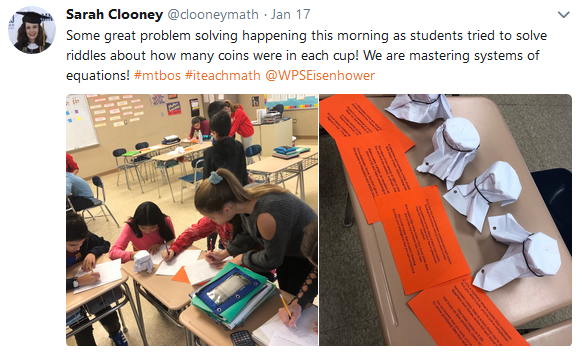
Using One Equation to Solve Another
Professor Smudge shares an equation-solving task that has students apply what they know from one equation to another.
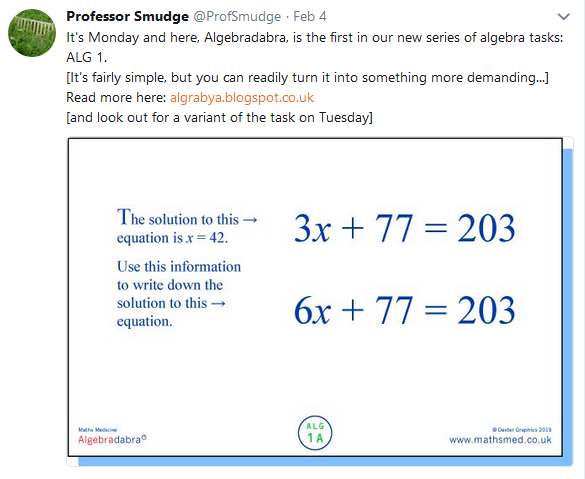
Fred the Function Machine
Eric Zuercher has produced a function machine that tells me I need to up my function machine game!
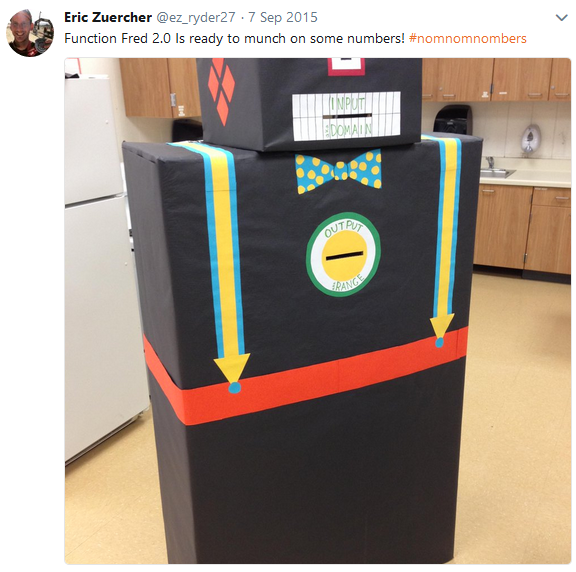
Which One Doesn’t Belong Poll
Taylor Grant shares what is, in my opinion, the most creative Which One Doesn’t Belong? puzzle ever.

Creating Lines of Best Fit with String
Mr. Zummo offers a great idea for teaching trend lines when creating scatter plots. I never would have thought of using string as the line of best fit!
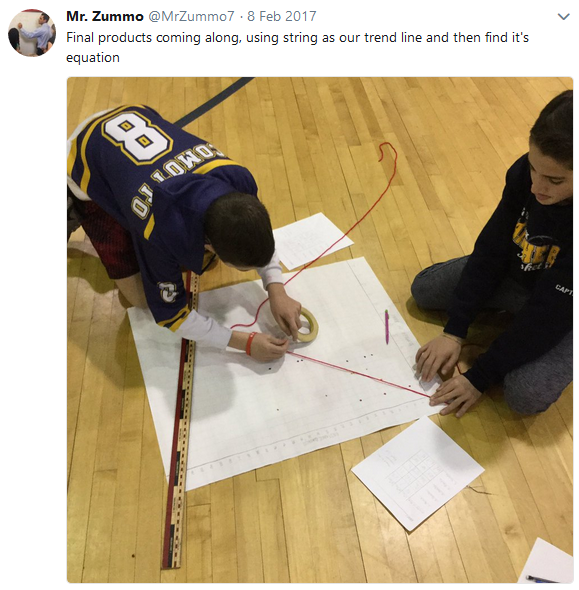
Congruent Triangles with Patty Paper Activity
Elissa Miller shares a great idea for using patty paper in geometry.
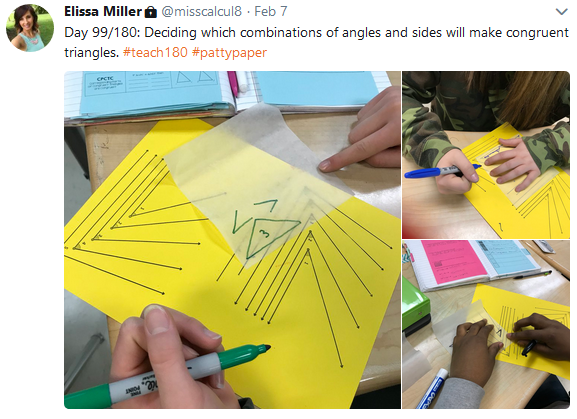
Scoring Deer Antlers
Have some deer antlers around? They make the perfect manipulative for practicing adding fractions. This creative idea comes from Kelsey Brown.
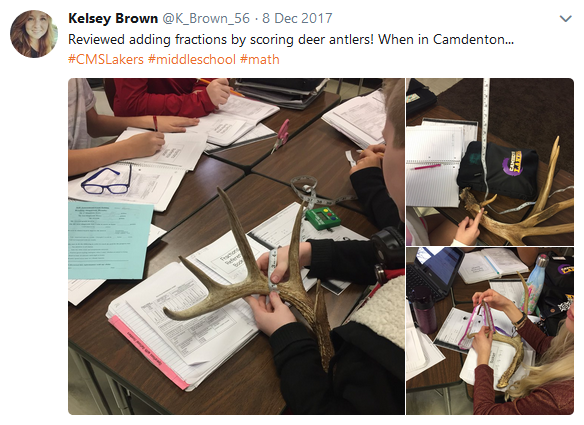
Equation Matching Around the Room Activity
Lisa Broadbent shares an idea for getting students up and moving around the classroom while translating between words and equations.
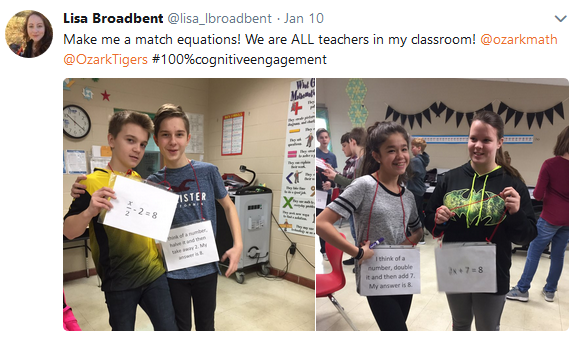
True or False?
Lori Breyfogle shares a great question to pose to your students. My students the other day had no problem when we arrived at 5 = 13 as the answer to a question, so I’m curious how my own students (in high school) would respond.
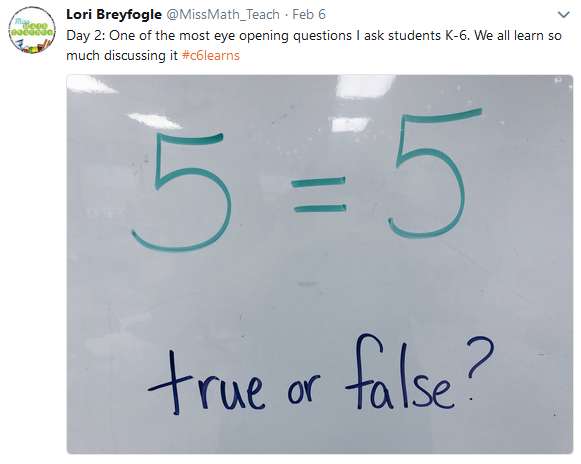
Movie Poster Math
Ann Arden retweets a copy of a movie poster where the math is ALL wrong. How would your students interpret this solution mathematically?
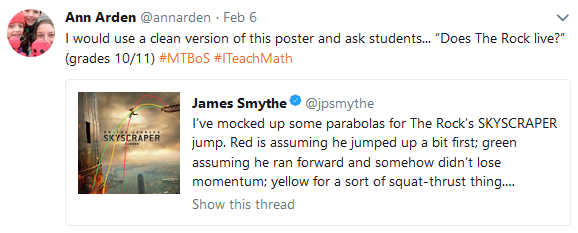
Getting Home Puzzle
David Sladkey shares a fun-looking puzzle.
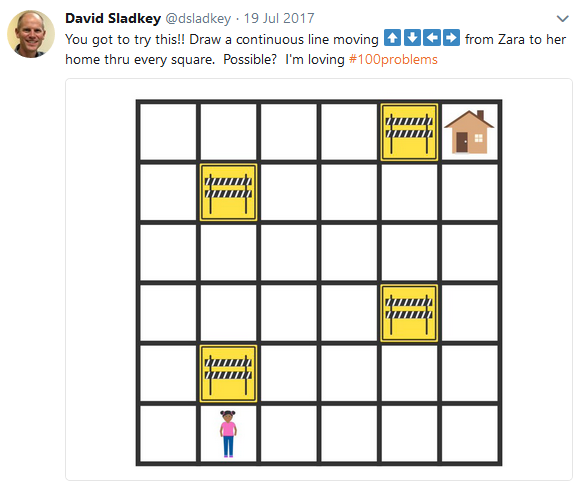
Eraser Ban
David also shares an interesting post about his “Eraser Ban.”
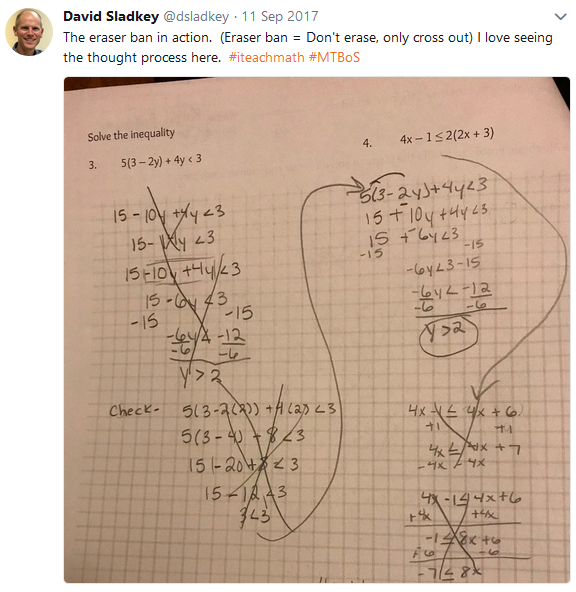
Desmos Fall Maze
David also shares a fun, fall-themed puzzle. You could easily change the theme to this puzzle for use any time of year, though.
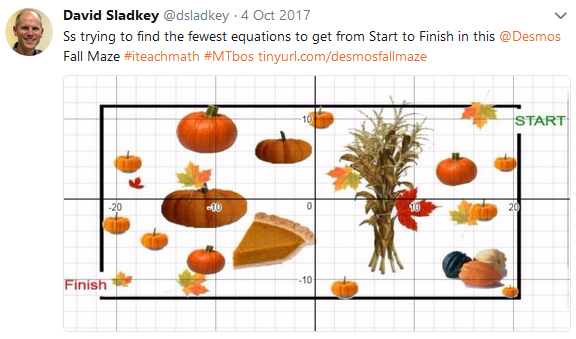
Estimation Challenge
How would your students fare with this estimation challenge that is also from David Sladkey?
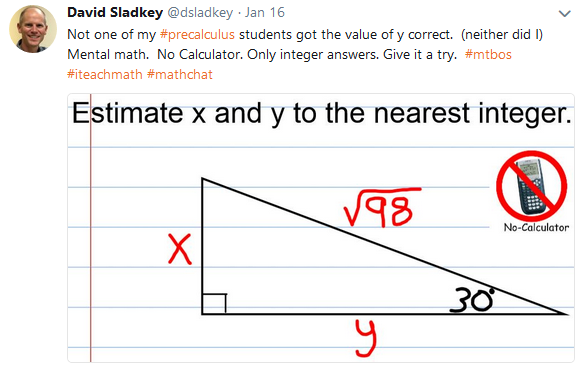
Think Outside the Square Puzzle
Rachael WS suggests giving your students this puzzle to make them think outside the box.
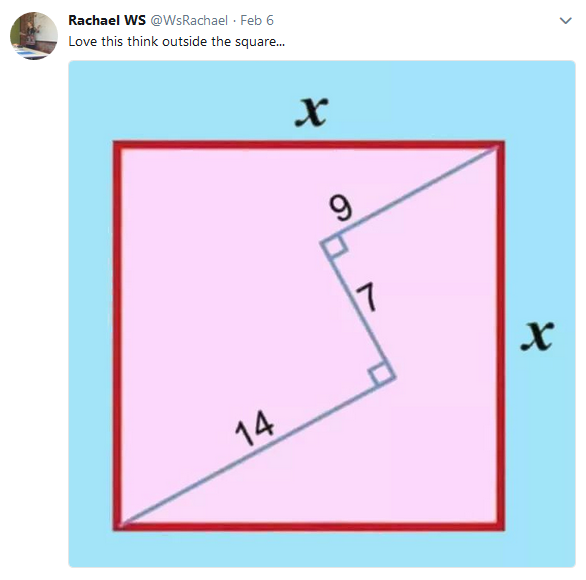
Solving Equations Find the Error Task
I’m super-inspired by this find the error task from Jae Ess. I need to do more error analysis with my students!
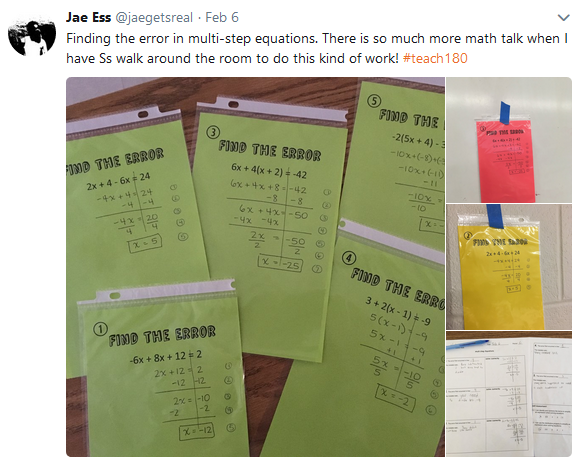
Until next week, keep up the awesome idea sharing!

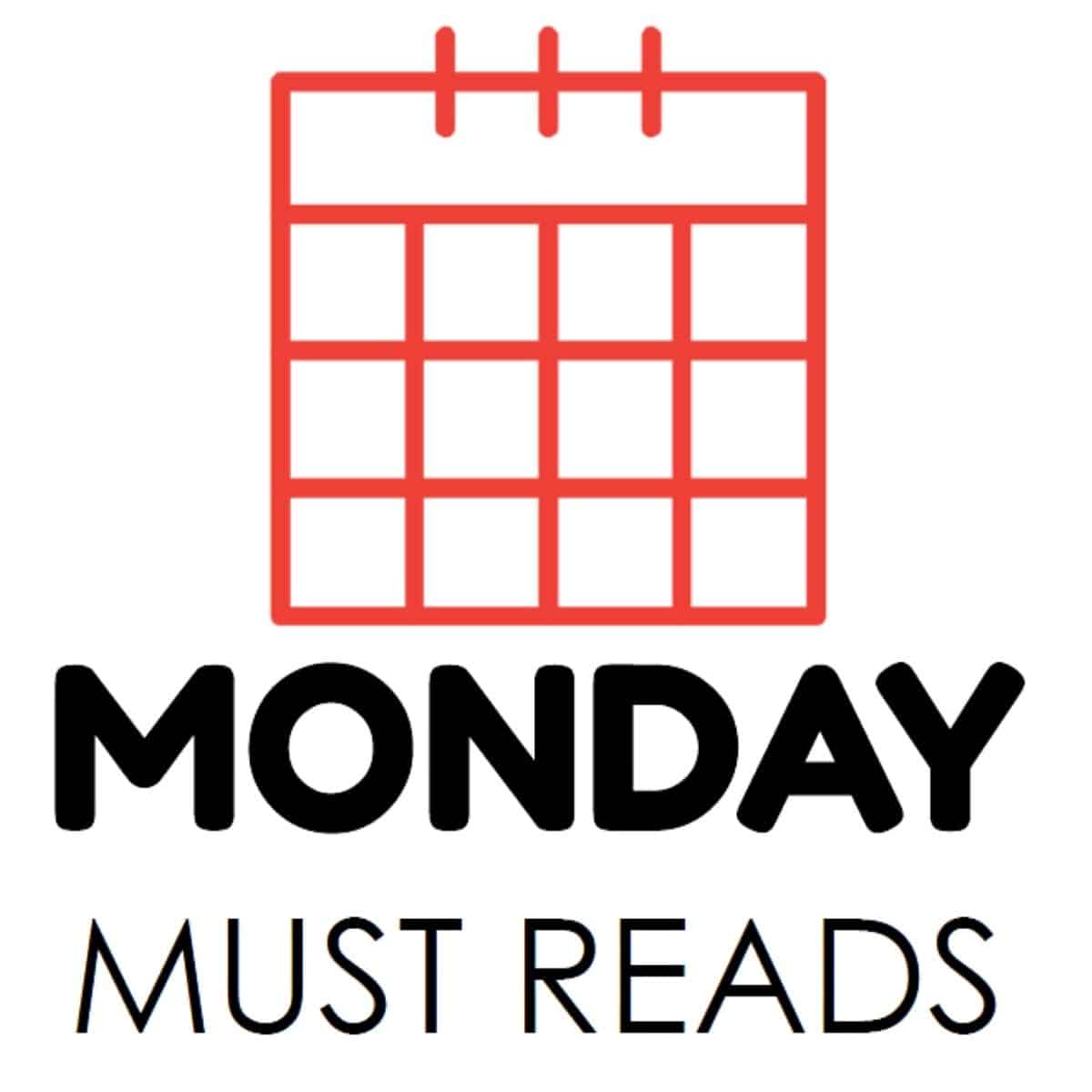
I have a Learning Celebration after every test. We review questiosn, reflect and revise for half the class period. The other half is board games that involve math, strategy or logic. Tsuro is their favorite. My first celebration I had balloons, streamers and brought in treats.